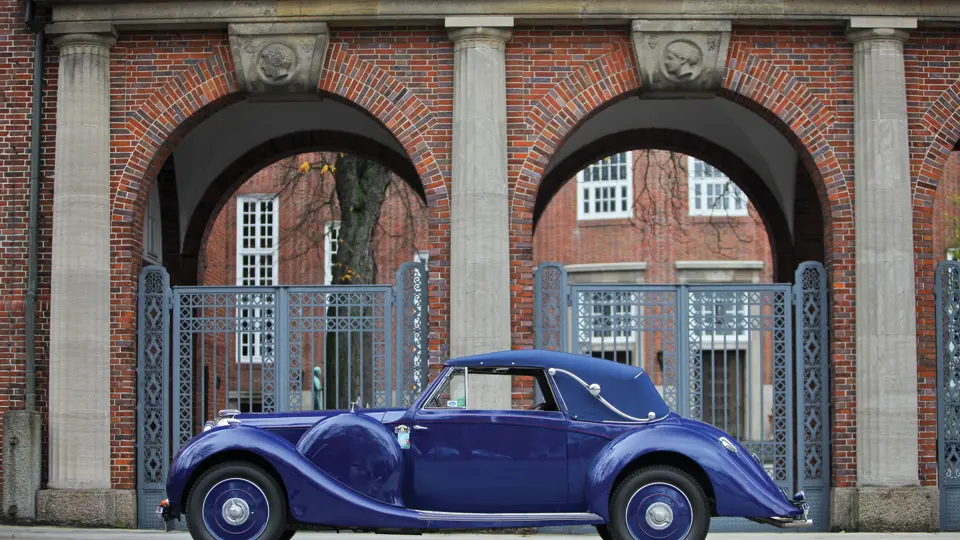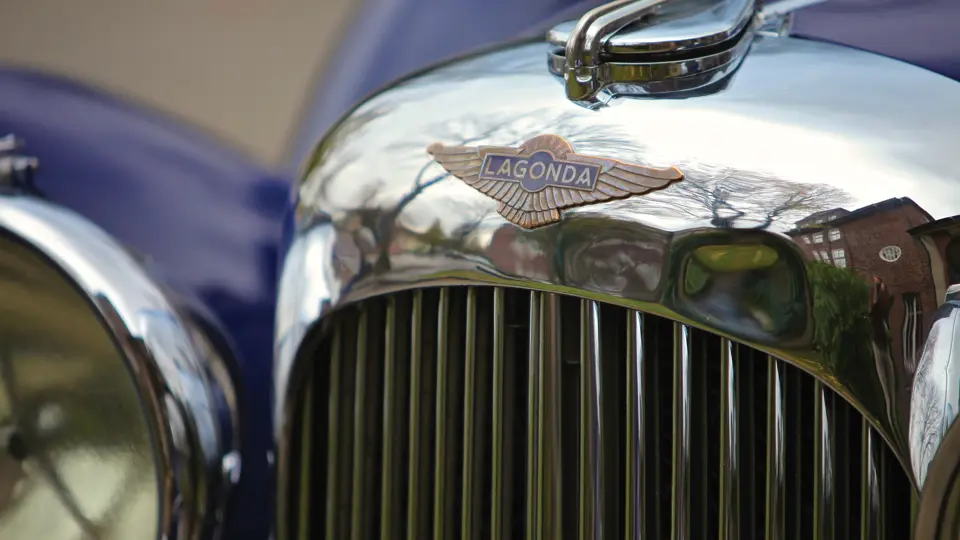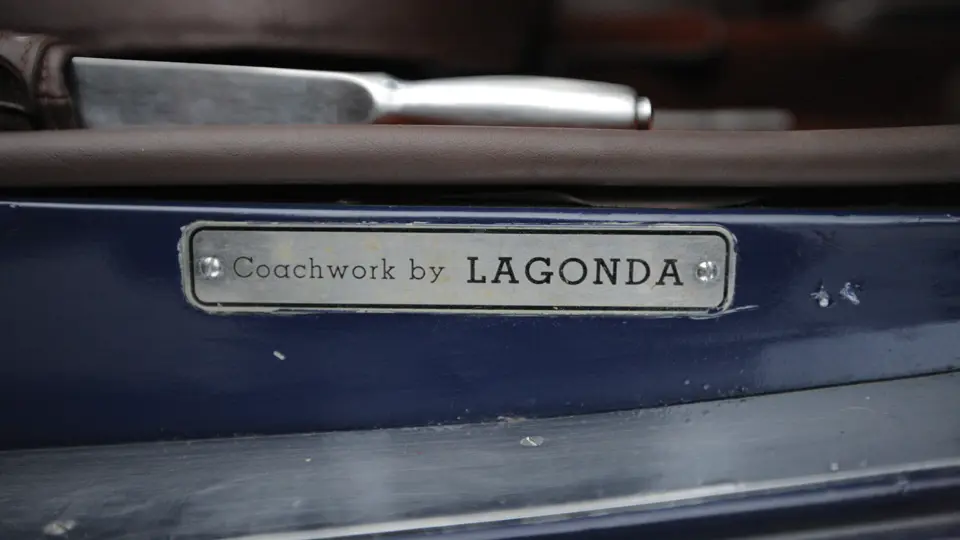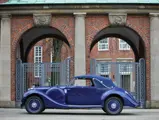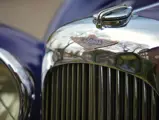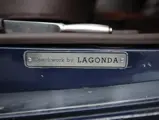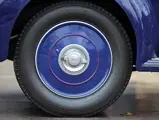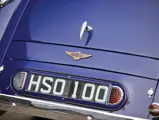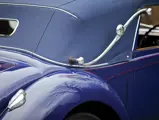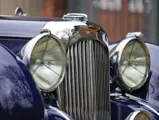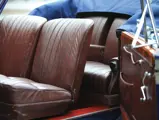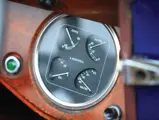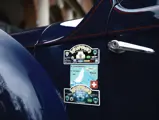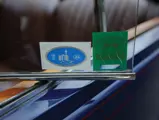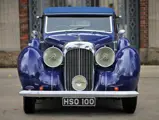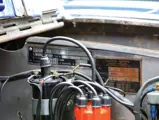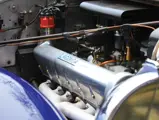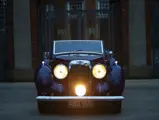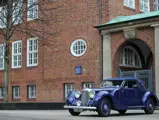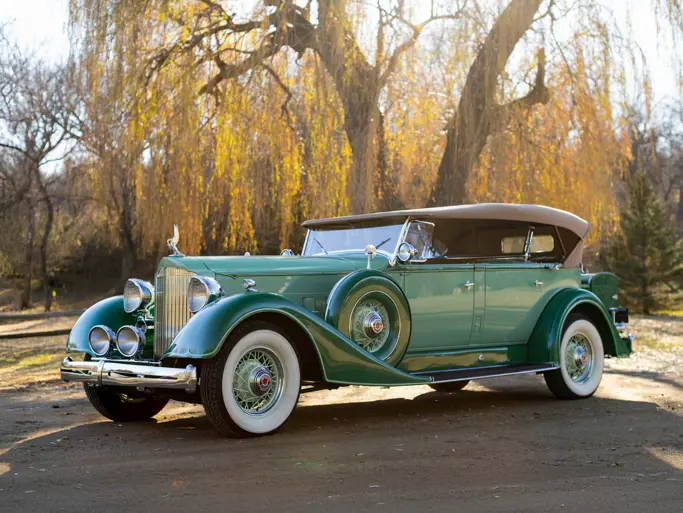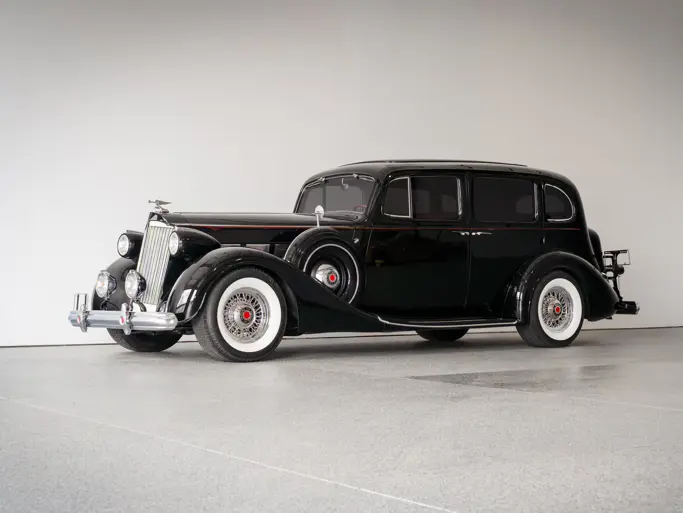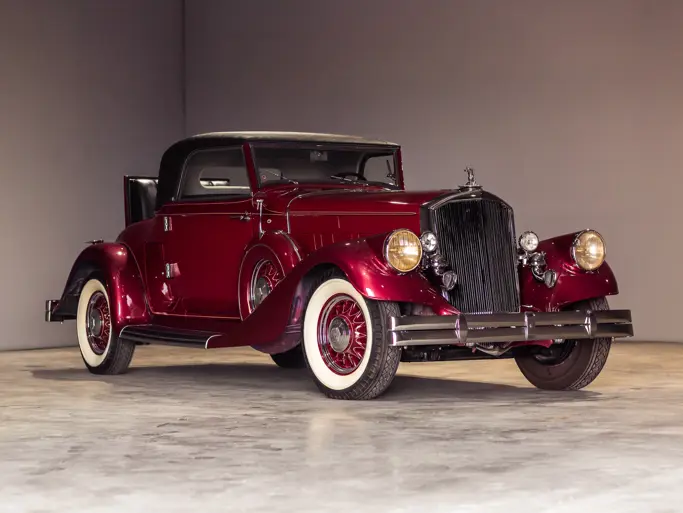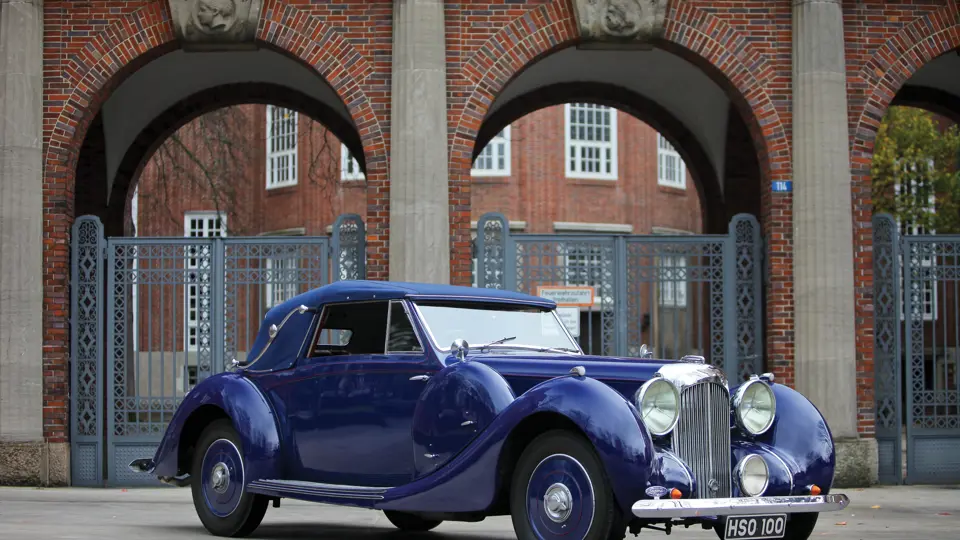
1938 Lagonda V-12 Drophead Coupé
{{lr.item.text}}
€252,000 EUR | Sold
{{bidding.lot.reserveStatusFormatted}}
- W.O. Bentley’s engineering masterpiece
- Only four owners from new, including the Doune Motor Museum
- Original body, engine, and chassis
- A veteran rally participant
- Chef d'œuvre technique de W.O. Bentley
- Quatre propriétaires seulement, dont le Doune Motor Museum
- Carrosserie, moteur et châssis d'origine
- Une ancienne habituée des rallyes de voitures anciennes
Est. 195 bhp, 4,480 cc single overhead-camshaft V-12 engine, four-speed manual transmission, torsion-bar independent front suspension, live rear axle with semi-elliptic leaf springs, and four-wheel hydraulic drum brakes. Wheelbase: 3,150 mm
Moteur V12, 4 480 cm3, 195 ch env., un ACT par banc, boîte manuelle quatre rapports, roues avant indépendantes avec barres de torsion, pont arrière rigide avec ressorts semi-elliptiques, freins hydrauliques à tambours sur les quatre roue. Empattement: 3 150 mm.
Rare is the opportunity for an engineer to express all of his talents with few limitations. Given the chance to do just that when he arrived at British automaker Lagonda in the late 1930s, W.O. Bentley put together a V-12 composed of chromidium, duralumin, steel, aluminium, and phosphor-bronze, with every single component tested to perform flawlessly under any operating condition. It sat on a chassis with independent front suspension and four-wheel hydraulic brakes, greatly improving handling and stopping power.
With a closed body, a Lagonda V-12 covered a distance of 101.5 miles in one hour, which is an impressive figure for the time, and it is even more so when one considers that they had to stop and change a flat tyre midway. Two special-bodied V-12s finished 3rd and 4th overall (1st and 2nd in class) at Le Mans. The performance of the Lagonda V-12 astonished the world, and today, it is arguably the most desirable British grand tourer of its era.
Offered here is an original factory-bodied Drophead Coupé that has the original engine and chassis that it was delivered with on 4 July 1938, to Mr K. Anderson, of Eastcot Place, Middlesex. It was laid up with little use through World War II, but it survived to be sold to Henry Wijnmalen, a Dutch-born British subject who made his fortune between the wars by importing aircraft and breeding race horses. A period newspaper article pictures Wijnmalen and a lady in front of the Lagonda, describing him as a “lover of fast horses, fast automobiles, and beautiful women”.
Wijnmalen sold the Lagonda to Douglas John Moray Stewart, the Lord Doune, later the 20th Earl of Moray, who used it as his personal automobile and then transferred it to his motor museum at his family’s Warnaway Castle in Scotland. Whilst in Lord Doune’s ownership, the car was repainted in 1970 from its original silver to the present Prussian Blue, and it was featured in Peter Hugo’s book, Private Motor Car Collections of Great Britain. It remained in his care for some 20 years before its acquisition by the present caretaker.
The car has been carefully brought up to its owner’s high standards over the last decade, whilst also being sympathetically kept as original as possible. A documented complete overhaul and rebuild of the V-12 was finished in 2008, including a completely new camshaft, new Mahle pistons, and specially handcrafted valves. A power test following the overhaul indicates a performance of 195 brake horsepower, which the current owner and his wife have much enjoyed on numerous outings and rallies all over Europe. Importantly, the car is still registered under Lord Doune’s British registration, HSO100.
This car, a Lagonda of quality, purity, and provenance, bearing the engine that was W.O. Bentley’s last and greatest accomplishment, is fit enough to grace any prestigious collection, just as it did at a Scottish castle many years ago.
Pour un ingénieur, il est rare de pouvoir exprimer tout son talent presque sans contrainte. C'est pourtant l'occasion qui a été donnée à W.O. Bentley lorsqu'il est arrivé chez le constructeur britannique Lagonda, à la fin des années 1930. Il a donc mis au point un moteur V12 composé de chrome, duralumin, acier, aluminium et bronze phosphoreux, chaque composant étant testé pour assurer un fonctionnement parfait dans toutes les conditions d'utilisation. Il a installé ce moteur dans un châssis doté de roues avant indépendantes et de freins à commande hydraulique, ce qui a permis d'améliorer de façon significative la tenue de route et le freinage.
Équipée d'une carrosserie fermée, une Lagonda V12 a couvert la distance de 101,5 miles (163,35 km) en une heure, une performance impressionnante pour l'époque, d'autant qu'un arrêt au stand avait été nécessaire pour remplacer un pneu crevé. Aux 24 Heures du Mans, deux Lagonda V12 équipées d'une carrosserie spéciale ont terminé troisième et quatrième au classement général (victoire et deuxième place de catégorie). Les performances de la Lagonda V12 ont surpris le monde entier et, aujourd'hui, ce modèle est sans doute la grande routière britannique la plus désirable de son époque.
Nous proposons ici un cabriolet doté d'une carrosserie usine et dont le châssis et le moteur sont d'origine. Il a été livré neuf le 4 juillet 1938 à M. K. Anderson, d'Eastcot Place, dans le Middlesex. Entreposée et peu utilisée pendant la seconde Guerre Mondiale, cette voiture a été ensuite vendue à M. Henry Wijnmalen, sujet britannique né aux Pays-Bas et ayant fait fortune entre les deux guerres en important des avions et des chevaux de course. Sur un journal d'époque, l'on peut découvrir une photo de Wijnmalen en compagnie d'une jeune femme, accompagnée d'un commentaire qui le présente comme un "amateur de chevaux de race, de voitures rapides et de belles femmes".
Wijnmalen a plus tard cédé la Lagonda à Douglas John Moray Stewart, Lord Doune, plus tard 20e Comte de Moray, qui l'a utilisée comme voiture personnelle avant de la transférer au sein de son musée automobile, au château de famille de Warnaway, en Écosse. En 1970, Lord Doune faisait repeindre le voiture dans une teinte bleu de Prusse, au lieu de la couleur argent d'origine, et elle apparaissait dans l'ouvrage de Peter Hugo, Private Motor Car Collections of Great Britain. Cette Lagonda est restée entre les mains de Lord Doune pendant quelque 20 ans avant que l'actuel propriétaire n'en fasse l'acquisition.
Au cours des dix dernières années, l'état de la voiture a été soigneusement amené aux standards de son nouveau propriétaire, qui a également cherché à la maintenir aussi proche que possible de son état d'origine. Une restauration complète du V12, complètement documentée, a été achevée en 2008. Elle incluait un arbre à cames neuf, des pistons Mahle neufs et des soupapes fabriquées spécialement. Après sa remise en état, le moteur a été testé au banc et affichait une puissance de 195 ch, ce dont l'actuel propriétaire et son épouse ont abondamment profité lors de nombreux rallyes et balades dans toute l'Europe. Fait important, la voiture porte encore son numéro d'immatriculation du temps de Lord Doune, HSO100.
Cette Lagonda, qui présente une qualité, une pureté et une provenance hors du commun, et qui est équipée du moteur correspondant au dernier chef-d'œuvre de W.O. Bentley, est à la hauteur de n'importe quelle collection prestigieuse, comme celle dont elle a fait partie il y a plusieurs années, au cœur d'un château écossais.


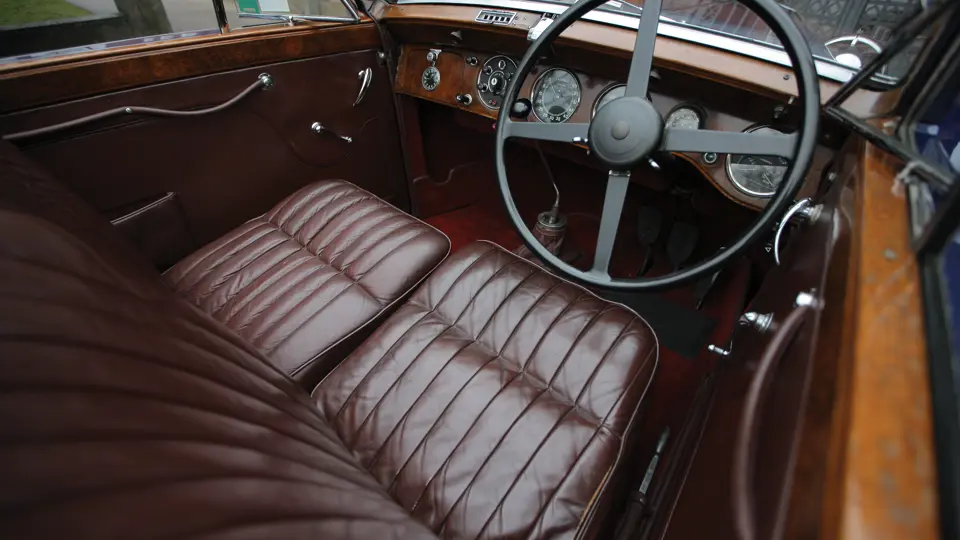

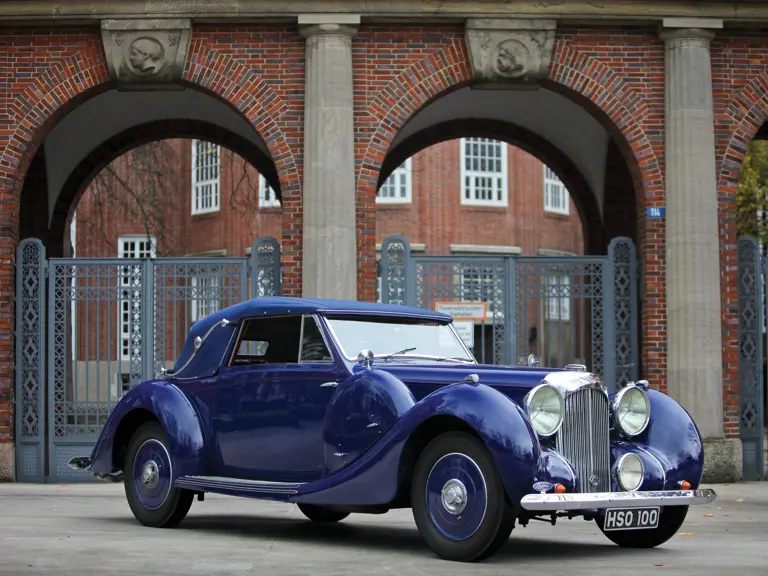
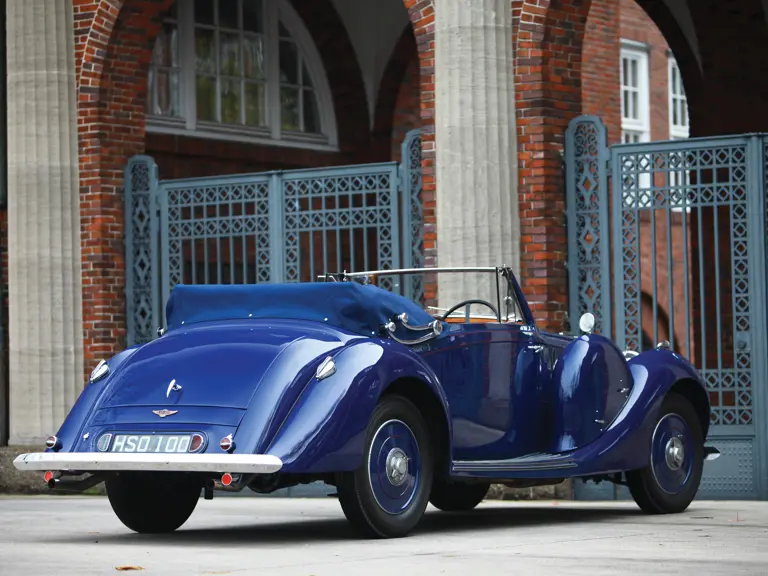
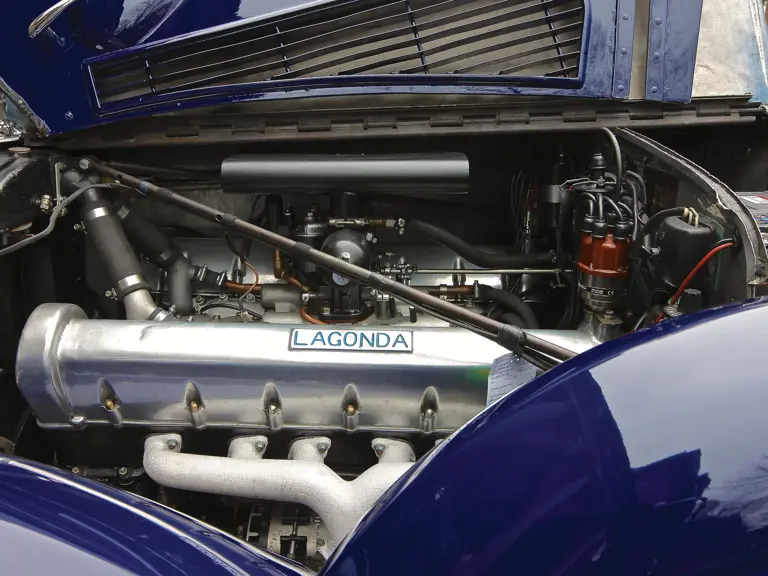
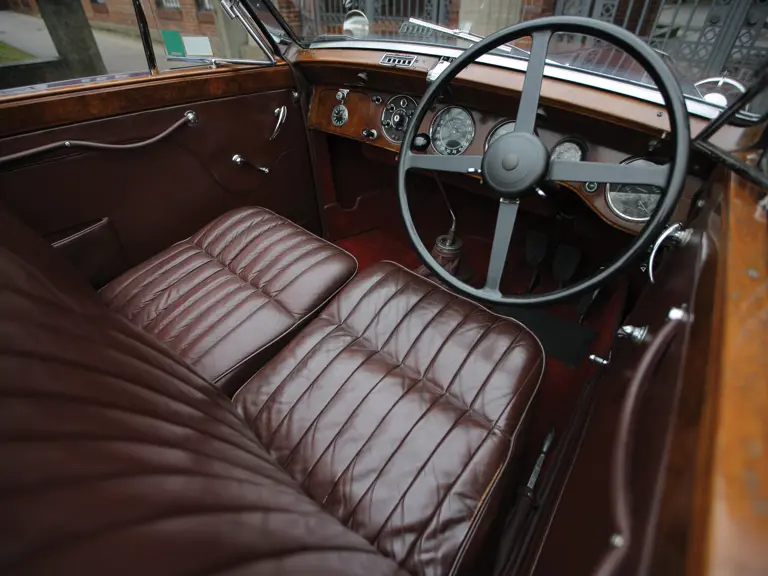

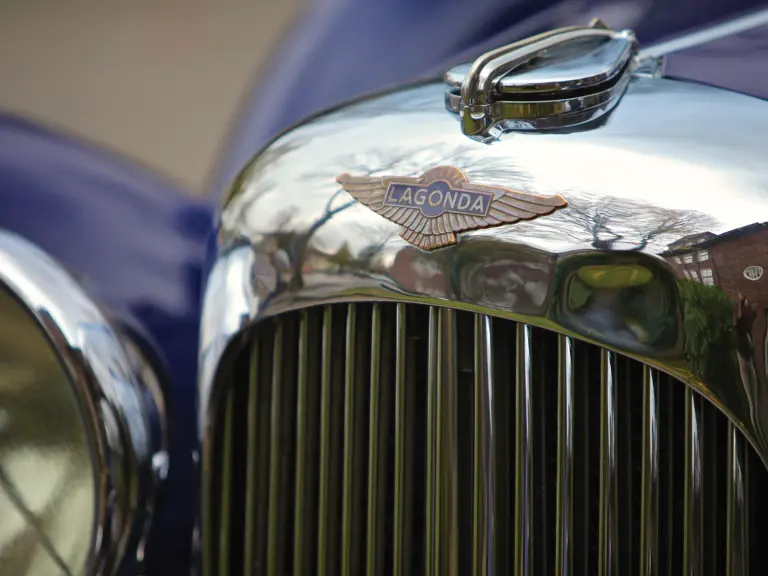
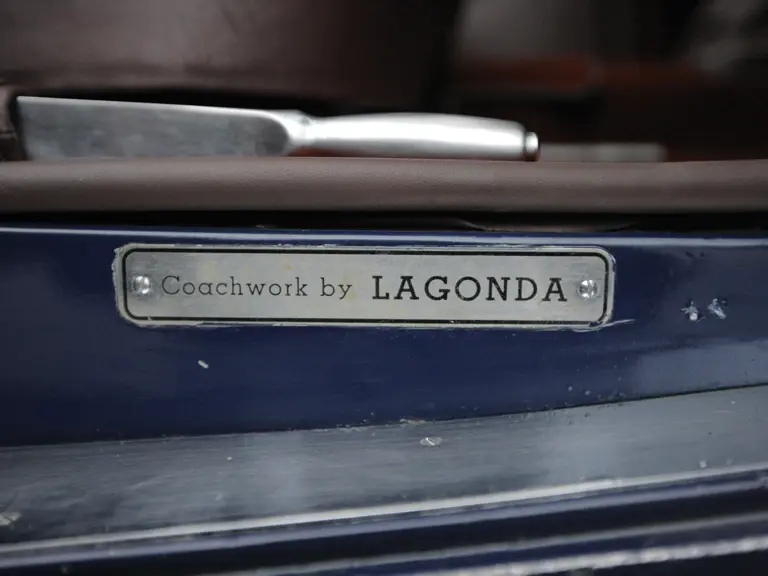
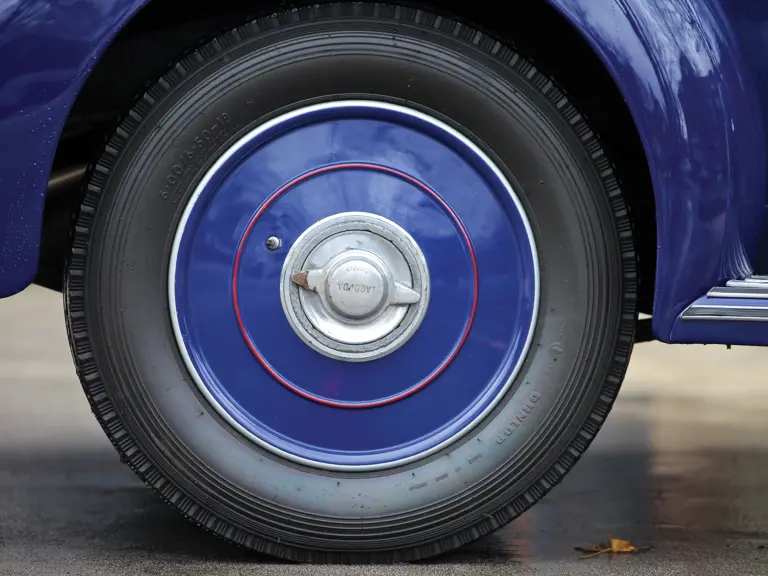
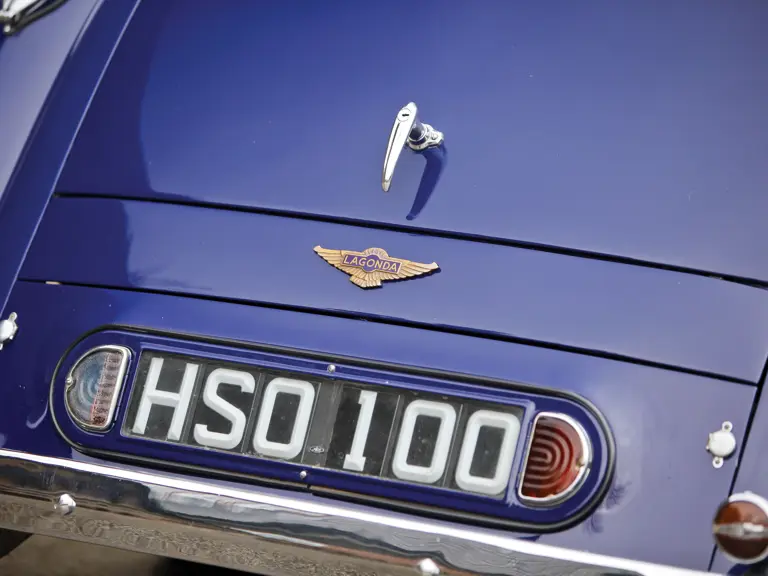
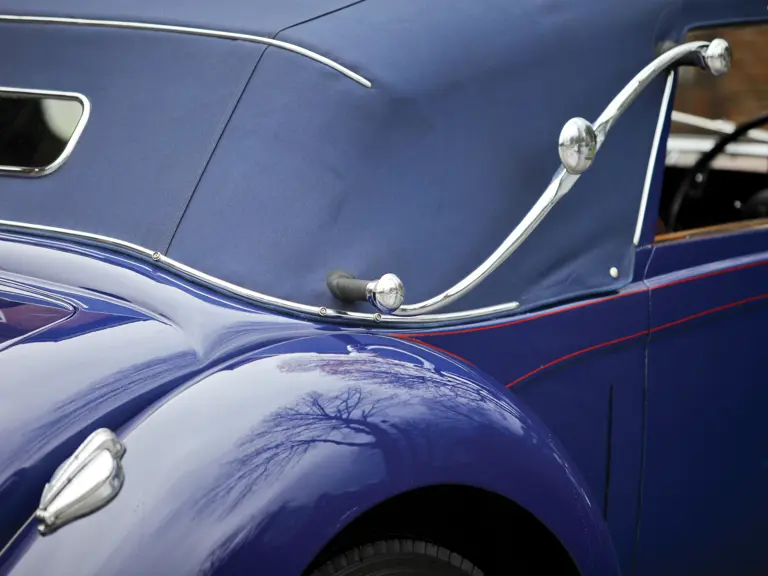
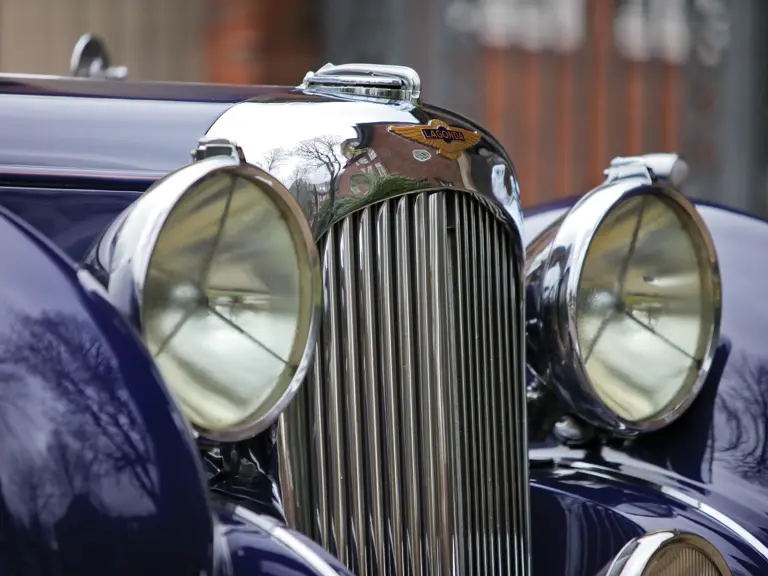
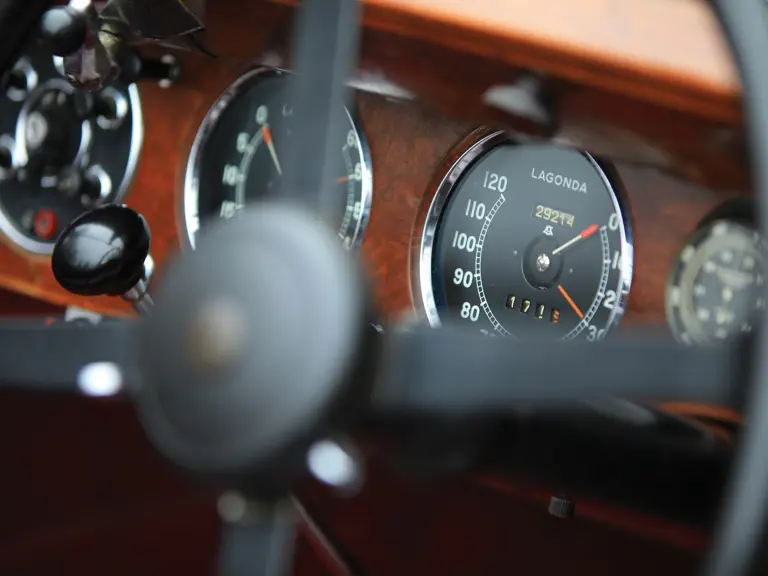
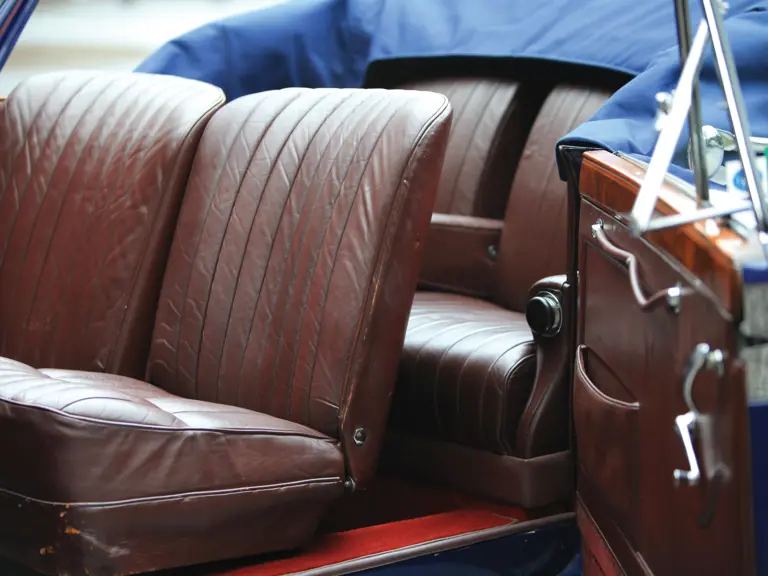
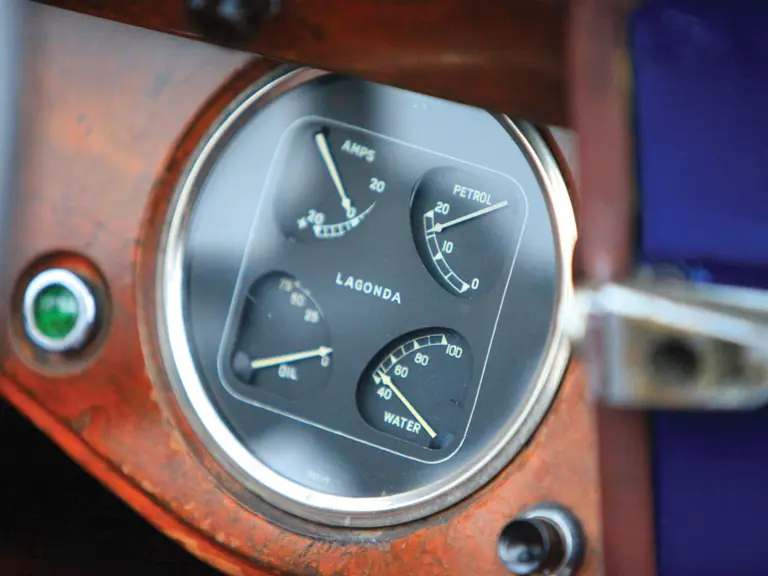
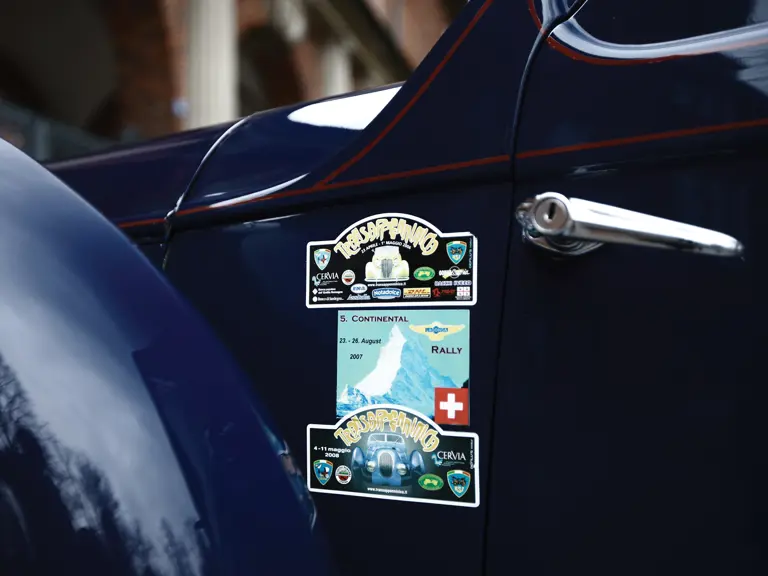
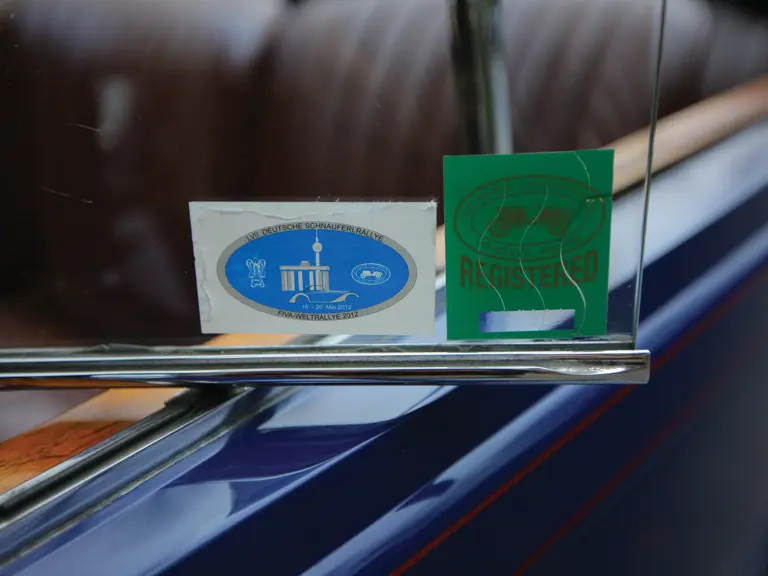
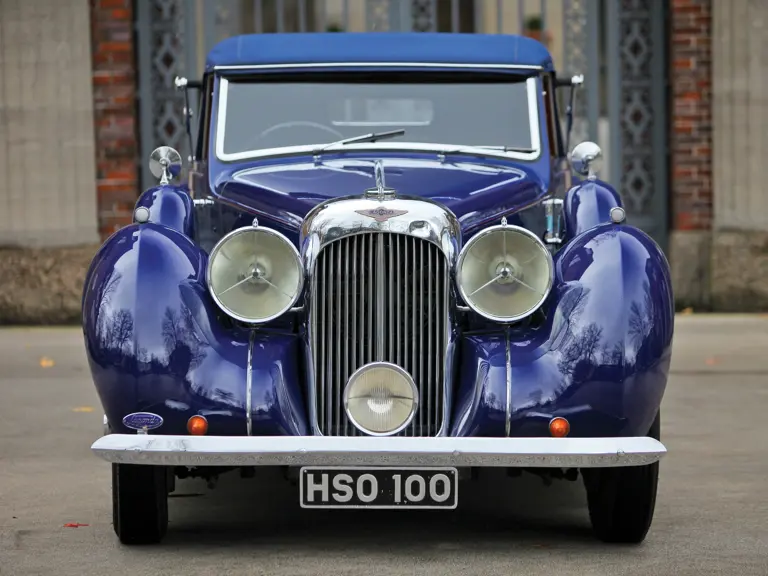
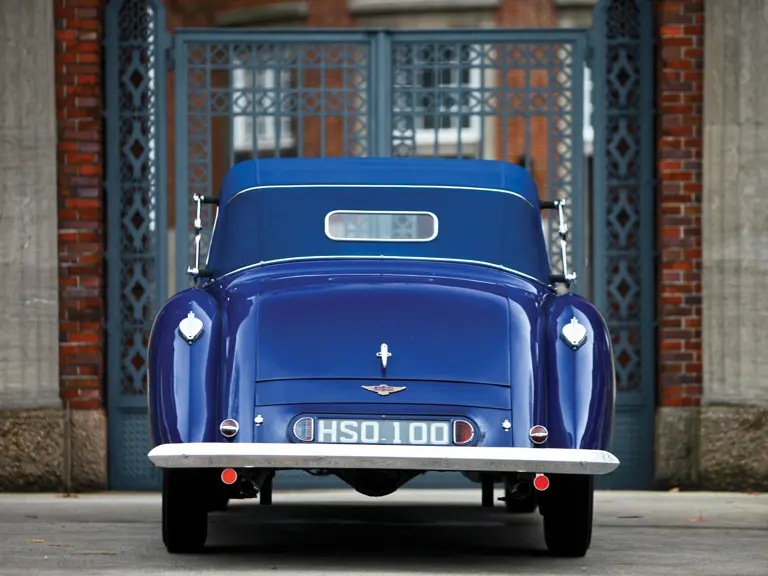
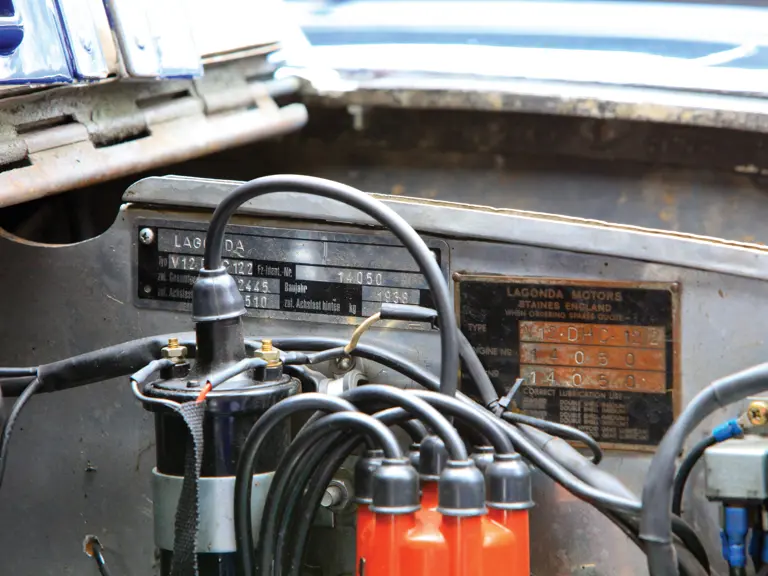
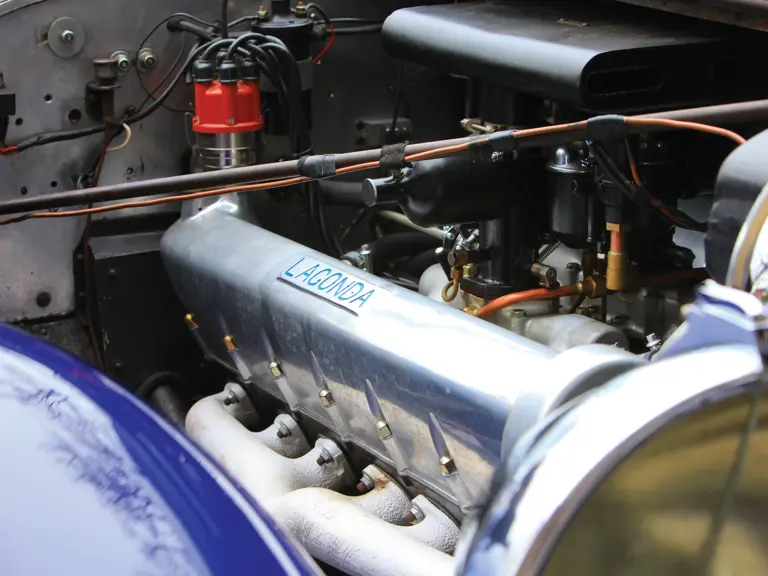
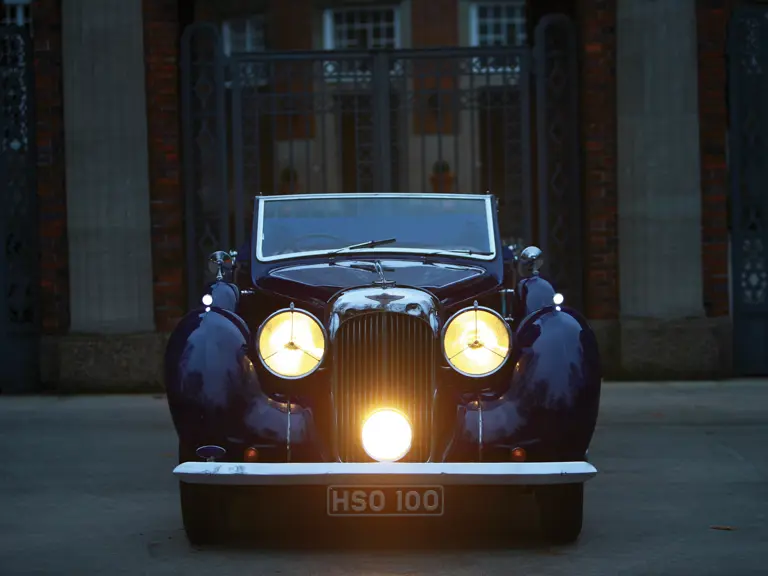
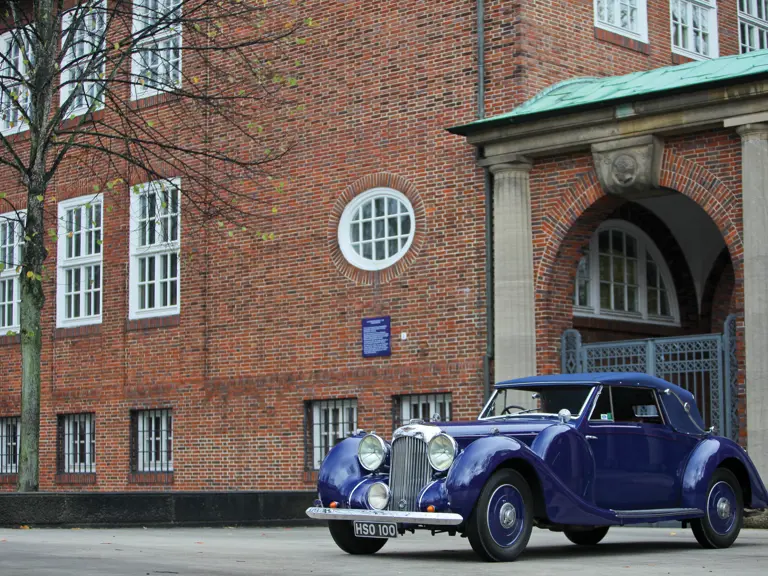
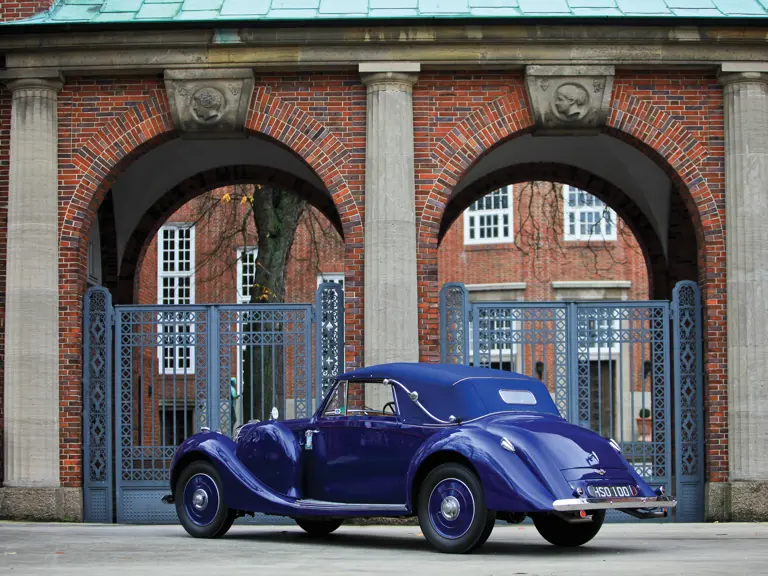
 | Paris, France
| Paris, France
